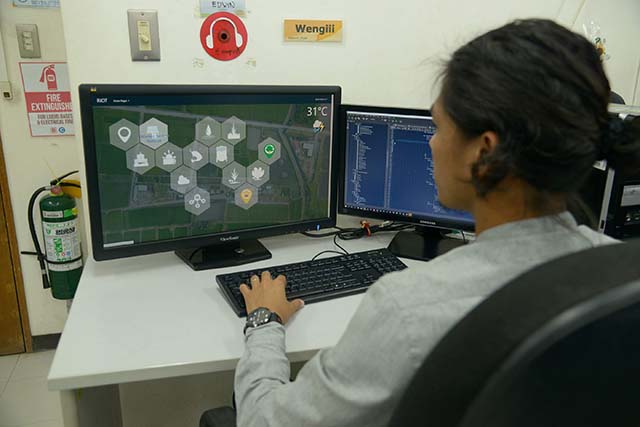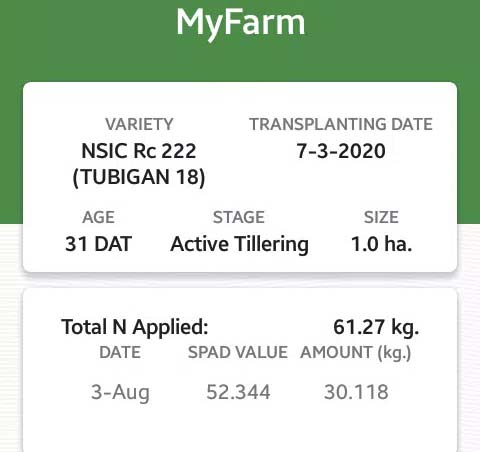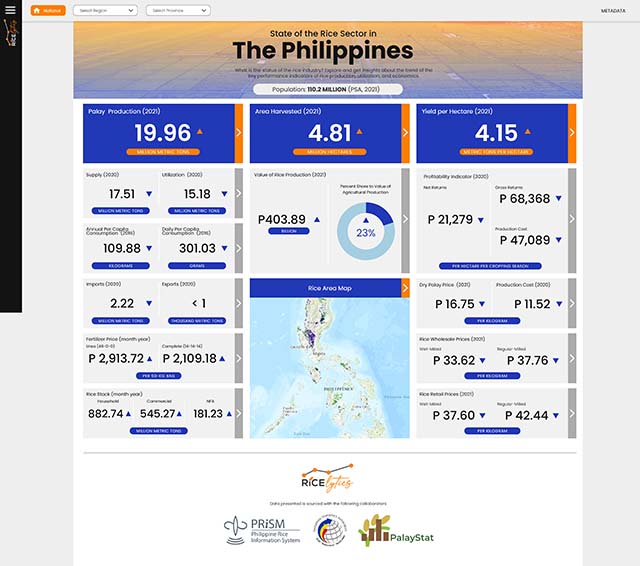
There’s a hostile projection for companies that do not adopt new technologies. John Chambers, former executive chairman and CEO of Cisco Systems, estimated that “at least 40% of all businesses will die in the next 10 years… if they don’t figure out how to change their entire company to accommodate new technologies.”
Thinking ahead even before Chambers’ prediction, DA-PhilRice has envisioned a digitally transformed system that will not only benefit the institute, but also will provide welfare to the rice farmers. “We can imagine a future being redesigned further by the advances in so-called disruptive, exponential SMAC (social media, mobility, analytics, cloud) technologies that can enable our farmers to earn more from their farming and empower them to become better versions of themselves,” Dr. John de Leon, executive director, said.
Adopting technologies is not only enough. Institutions and companies are urged to act fast to cope with the world’s volatility. As Jeff Bezos, the founder of Amazon, said, “In today’s era of volatility, there is no other way but to re-invent. The only sustainable advantage you can have over others is agility….”
Pre-pandemic, digital farming has already come of age at DA-PhilRice with ICTs already applied in rice fields since early 2000s, which included the Open Academy for Philippine Agriculture and the DA-PhilRice Text Center.
Presently, a long-term plan (2023 – 2028) for digital transformation (DX) has been mapped by the Institute as a strategic vision – harnessing the ubiquitous resources of internet and smartphone for farming. “DX will definitely be a priority for PhilRice in its 2023-2028 strategic plan. We believe in its critical contribution to efficiency, resiliency, and transparency. We hope to regularly commit a certain percentage of our budget in support of DX,” said Dr. Karen Eloisa Barroga, deputy executive director for development.
Three key areas are being developed for the DX–rice production technology through the rice integrated crop management system called PalayCheck; rice value chain and organizational processes and operations. The establishment of a Big Data Analytics Center is also eyed.
Apps/info systems to support digitalization of PalayCheck were already developed including the eDamuhan, an app that helps rice farmers identify weeds; MinusOne-Element Technique app that computes the soil’s fertilizer requirements; and Binhing Palay app that gives farmers information on rice varieties, seasonal suitability for planting, seed and grain quality, and yield under local conditions.

Leaf Color Computing (LCC) app, which assesses the nitrogen status of rice plants based on leaf color; AgRIDOC app, which allows farmers to keep records of their rice farming activities and expenses; and RCMAS 4.0 (Rice Crop Manager Advisory Service) were also continually improved as complementary apps for the PalayCheck system.
The following services are offered: farmer and farm lot registration, geo-referencing of farm lots, generation and printing of farmer ID cards, sending of autogenerated text messages to farmers’ mobile phones, and farm monitoring to multiply benefits for farmers.
According to De Leon, the power of digital transformation can be tapped through big data analytics and open innovation to rationally help solve falling palay prices and other related value-chain activities. Among these are rice classification (by traders at the farmgate and retail market), and reporting of rice prices (both palay and milled rice) and production losses.
In the works are ePaalala, which will complement or serve as an added feature of our Text Center and the Bantay Palay app to help farmers negotiate for better prices for their produce.
The Statistical Laboratory and Data Center (StatLab) and the PhilRice Data Analytics Initiative (RiceLytics) are further expanding the Institute’s data management and analysis capacity. Statistician Aphrodite Ortiz said that StatLab provides Key Performance Indicators (KPIs) that help policymakers come up with “evidence-based decisions through the provision of consultations, seminar-workshops, and other data science support services.”

Meanwhile, RiceLytics provides critical KPIs on the status of rice farmers and rice value-chain through an online data analytics dashboard.
The Philippine Rice Information System (PRISM) project also generates seasonal data on rice areas and yields, and assessment of crop health and damage in the event of typhoons, floods, or drought. Flooded rice area maps and drought stricken areas are produced. It integrates remote sensing, crop modeling, standardized procedures for crop health assessment, and smartphone-based surveys to provide information on where, when, and how much rice is grown in the country.
Fast may sometimes be paired with furious as popularized by a series of action films largely concerned with street racing and chase. At DA-PhilRice, it’s fast and gentle. Fast to adopt; gentle in pilot-testing the apps to ensure that the workings of our digitalization are evidence and science-based, and more importantly, user-friendly.




